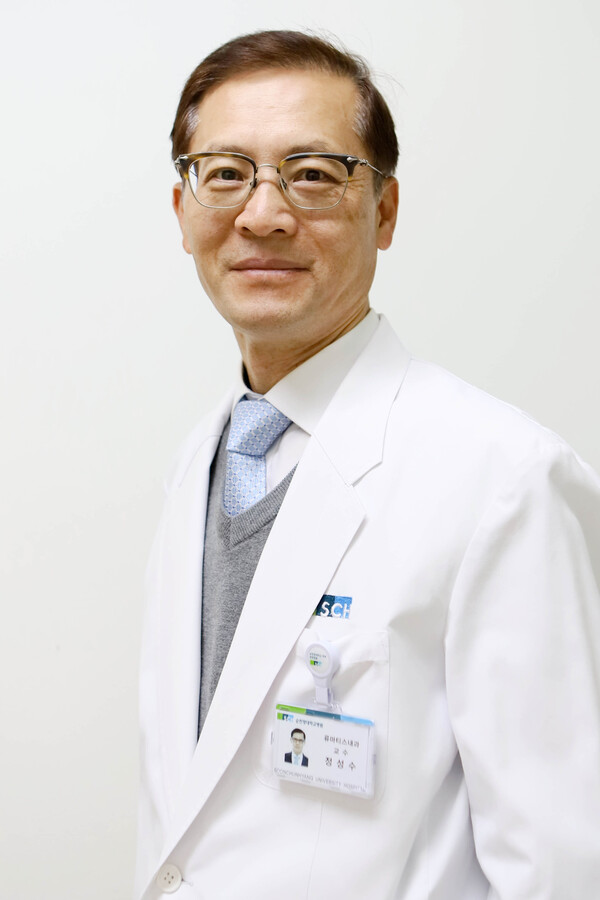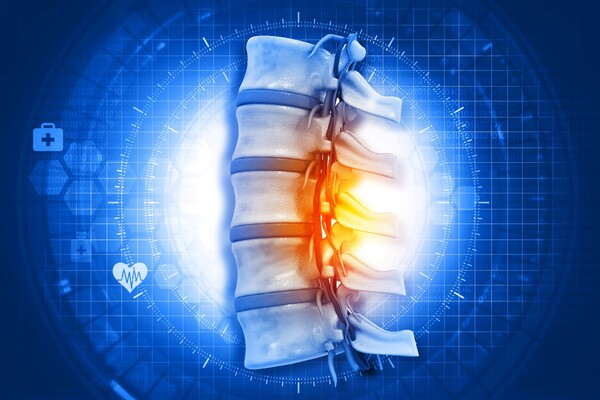Ankylosing spondylitis is a chronic autoimmune disease that causes pain and stiffness, mainly due to inflammation of the spine and joints. It usually affects people in their teens to 30s, and the younger the onset, the faster and more severe the disease can be. Notably, ankylosing spondylitis is more severe in women than in men.
“Ankylosing spondylitis is a relatively rare disease, with a prevalence of about 0.3 to 0.5 per 1,000 people, with two to three times more male patients than female patients,” says Professor Jung Sung-soo of the Department of Rheumatology at Soon Chun Hyang University Hospital Bucheon.

In women, symptoms may be relatively mild, and progression may be slower, Professor Jung added.
Ankylosing spondylitis is characterized by more stiffness when you wake up or after sitting for long periods. Over time, the vertebrae stick together and stiffen. An X-ray may show a bamboo-like straightening of the vertebrae.
In ankylosing spondylitis, the pain starts mild but becomes more severe. The pain can progress to the sacroiliac joints (where the pelvis and spine meet), the lower back and spine, and radiating pain to the buttocks and legs. Other symptoms include inflammation of the eyes, a red, scaly rash on the skin, inflammatory bowel disease, heart valve problems, aortitis, and decreased lung function, Professor Jung explained.
The cause of ankylosing spondylitis is still not fully understood, but genetic factors and abnormalities in the immune system are thought to play a role. Eighty to 90 percent of people with ankylosing spondylitis test positive for the HLA-B27 gene, associated with the body's defense immune response. This, combined with environmental factors, including the gut microbiome, has been linked to a higher risk of developing the disease.

The diagnosis of ankylosing spondylitis is based on a combination of clinical symptoms, imaging studies, and blood tests. The doctor will look for stiffness after sitting still for long periods, symptoms relieved with movement, and a family history of the condition.
Blood tests can also be done to check for the HLA-B27 gene, and inflammation levels can be assessed by testing for C-reactive protein and erythrocyte sedimentation rate, which are markers of inflammation.
There are two main types of treatment: pharmacologic and nonpharmacologic. Medications include anti-inflammatory drugs, anti-rheumatic drugs, biologic anti-TNF antibodies, interleukin-17 inhibitors, and small-molecule inhibitors called JAK inhibitors.
Non-drug treatments include exercise and physical therapy, posture, and lifestyle modification. It is especially important to manage the microbiome through a healthy diet, as an unhealthy gut microbiome can trigger an unnecessary immune response, leading to recurrent inflammation.
In addition, patients must avoid floury foods, milk, dairy products, simple sugars, and processed foods in favor of anti-inflammatory vegetables, fruits, and foods rich in omega-3s. Proper exercise, including stretching, flexibility, maintaining good posture, breathing exercises, strength training, smoking and alcohol abstinence, stress management, and good sleep habits are also important.
“Ankylosing spondylitis can be managed with various treatments to manage symptoms and reduce inflammation, which can slow joint stiffness and deformity,” Professor Jung said. “Although it is difficult to prevent ankylosing spondylitis completely because it is largely genetic, it can be managed by adjusting lifestyle and dietary habits to lower the risk of developing the disease and prevent symptoms from worsening.”
He added that it is also essential to avoid poor posture in daily life, such as slouching, sitting on the floor, sitting for long periods, and turn on the side when getting out of bed.
Related articles
- Ankylosing spondylitis, easily mistaken for spinal disease, needs early diagnosis
- Rinvoq’s rapid pain relief sparks optimism for ankylosing spondylitis patients
- Korea cuts patient treatment cost for palmoplantar pustulosis by 90%
- [Interview] ‘Early treatment changes everything for ankylosing spondylitis patients’

